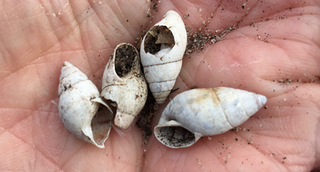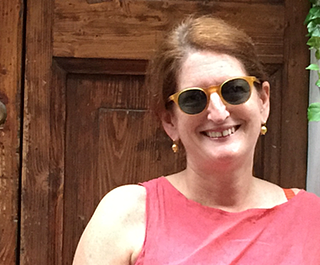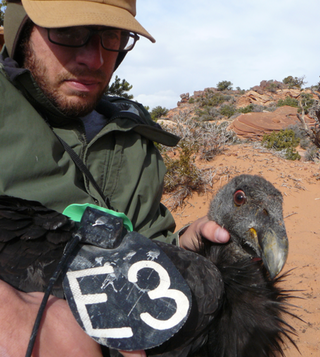
Podcast: Play in new window | Download (Duration: 17:09 — 11.8MB)
Subscribe: Google Podcasts | Spotify | Android | | More
 Day after day, week after week, special agents keep a look out for invaders that they really don’t want to find. And we, the ordinary public, give them barely a second thought. Worse, we sometimes provide the means for the invaders to get in. Of course when it all goes wrong, there’s an outcry, as there has been for the Mediterranean fruit fly, the European corn borer, the giant African snail and many other pests. Most of the time, however, we remain blissfully unaware. And most of the time, pests either don’t get in or are detected fairly quickly and eradicated.
Day after day, week after week, special agents keep a look out for invaders that they really don’t want to find. And we, the ordinary public, give them barely a second thought. Worse, we sometimes provide the means for the invaders to get in. Of course when it all goes wrong, there’s an outcry, as there has been for the Mediterranean fruit fly, the European corn borer, the giant African snail and many other pests. Most of the time, however, we remain blissfully unaware. And most of the time, pests either don’t get in or are detected fairly quickly and eradicated.
I was lucky enough to hitch a ride on a field trip in Puerto Rico, organised by the local survey teams to show plant health experts how they go about the business of keeping pests from establishing.
An aside: I can remember, back in the 1980s, sitting on a plane at Sydney airport ducking my head as the cabin staff wafted through spraying us with insecticide. These days, I learned, aircraft are mostly treated with persistent pesticides, eliminating the spray but not the need to keep insects out.
Notes
- The opening and closing music is Che Che Cole, by Willie Colón with Héctor Lavoe. I had no idea when I chose it that like some species of giant African snail, it’s original home is apparently Ghana. Some incursions are better than others.
- The music in the middle is La Boriqueña, the national anthem of Puerto Rico, but the site where I found this version has apparently vanished in the interim.
- The banner photograph shows two male Mediterranean fruit flies facing off, and is by Derric Nimmo.
- The cover photograph of a giant African snail – no Photoshop – is by R. Anson Eaglin of USDA APHIS.
- And those pathetic dead snail shells? They’re the ones I found, all excited like, but they weren’t the pests I was looking for.

 People looking for a good place to eat in Rome can choose from almost as many opinions as there are restaurants. Truth be told, though, a lot of those opinions have been shared by ninnies. Seriously, if you’re looking for some harmless entertainment as you wait for the bill to arrive after an excellent meal that you’ve thoroughly enjoyed, read what some of the people on some crowd-sourced websites have said about the place where you are eating. But I digress. Rather than wade through countless ninny-posts looking for a realistic recommendation, many visitors, and some residents, turn to one of the food writers based here. Among those, one person reigns supreme: Elizabeth Minchilli. Through social media, apps, books and tours, she tirelessly points people in the right direction. Her new book came out this spring. That’s a good enough reason for me to sit down for a drink with Elizabeth in her local neighbourhood.
People looking for a good place to eat in Rome can choose from almost as many opinions as there are restaurants. Truth be told, though, a lot of those opinions have been shared by ninnies. Seriously, if you’re looking for some harmless entertainment as you wait for the bill to arrive after an excellent meal that you’ve thoroughly enjoyed, read what some of the people on some crowd-sourced websites have said about the place where you are eating. But I digress. Rather than wade through countless ninny-posts looking for a realistic recommendation, many visitors, and some residents, turn to one of the food writers based here. Among those, one person reigns supreme: Elizabeth Minchilli. Through social media, apps, books and tours, she tirelessly points people in the right direction. Her new book came out this spring. That’s a good enough reason for me to sit down for a drink with Elizabeth in her local neighbourhood.
 Day after day, week after week, special agents keep a look out for invaders that they really don’t want to find. And we, the ordinary public, give them barely a second thought. Worse, we sometimes provide the means for the invaders to get in. Of course when it all goes wrong, there’s an outcry, as there has been for the Mediterranean fruit fly, the European corn borer, the giant African snail and many other pests. Most of the time, however, we remain blissfully unaware. And most of the time, pests either don’t get in or are detected fairly quickly and eradicated.
Day after day, week after week, special agents keep a look out for invaders that they really don’t want to find. And we, the ordinary public, give them barely a second thought. Worse, we sometimes provide the means for the invaders to get in. Of course when it all goes wrong, there’s an outcry, as there has been for the Mediterranean fruit fly, the European corn borer, the giant African snail and many other pests. Most of the time, however, we remain blissfully unaware. And most of the time, pests either don’t get in or are detected fairly quickly and eradicated. 
